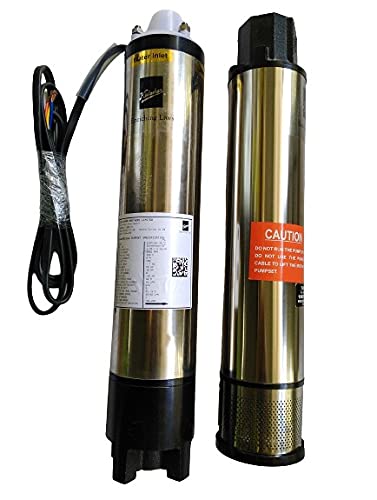As the name suggests, submersible pump are designed to work as motor pumps to fully submerge in the liquid. The major difference between other pumps and the submersible pump is that it completely submerges itself into the liquid that is needed in the pump. Moreover, these pumps are used for multiple applications.
Submersible pumps that their advantages and disadvantages, thus one should take careful consideration while looking to buy a submersible pump. Canon Genset is one of the leading pump set manufacturers which make unique designs and that’s what makes them a superior pump.
What are Submersible Pump?
Submersible pump sets are created to work using an entire assembly, including pump and motor and these are completely submerged in the medium or liquid. Additionally, these types of pumps are hermetically sealed with the motor which is closed to the pump body. The enclosures around the motor are filled with oil which protects them from damage and also prevents entry of any liquid that can result in a short circuit.
When the pump is submerged, the positive fluid pressure comes up at the inlet of the pump. It creates efficiency because less energy is needed to move the fluid from the liquid path to the pump. Moreover, a submersible pump used in the oil & gas industry operates as per Electric Submersible Pumping principle. It is a cost-effective way that is used to lift large volumes of fluid from deep wells. Also, the motor which is used in ESP is created under high pressures and temperatures. Thus, special electricity cables are required which can be very expensive.
Advantages
- Since submersible pumps are not fully submerged, they are not prone to cavitation
- Such pumps are self-priming. It means they are pumped and operated below the surface of the fluid.
- While used in varied applications and due to submerging, these pumps do not make noise. Therefore, there is no noise pollution
- A submersible pump is operated with the help of a head pressure of the liquid on the suction end. Thus, it doesn’t need much energy to draw liquid to the pump.
Disadvantages
- Submersible pumps are not easily accessible for inspection or maintenance especially when it is used in the deep well. Thus, it makes it difficult to maintain the pump and these are run till they break down or need replacement.
- Long exposure of the pump to liquid can result in corrosion. These pumps are often used to handle liquids that are abrasive or corrosive. The seals are mostly prone to corrosion which can lead to damage to the motor or leakage. To counteract this issue, pumps are also made with non-corrosive material which makes them expensive.
Applications of Submersible Pumps
Submersible pump sets are reliable and very easy to operate even in harsh conditions. Such pumps are made with robust iron casting and protected against any corrosion using coated epoxy. The main applications of submersible pumps are-
- Wastewater
- Sewage treatment
- Sump pumping
- Dredging
- Mining
- Wells
- Oil & gas
Conclusion
The use of submersible pumps has gained quite a popularity with its range of ratings for pumping speed, capacity and energy use. Many of them are also interchangeable and are used in different applications for pumping thin liquids. To ensure that you have the right pump for your need, contact Canon Genset to get your needs met at the right cost.




Recent Comments